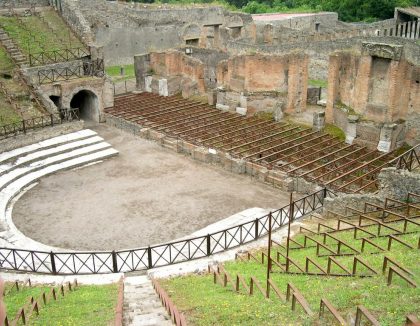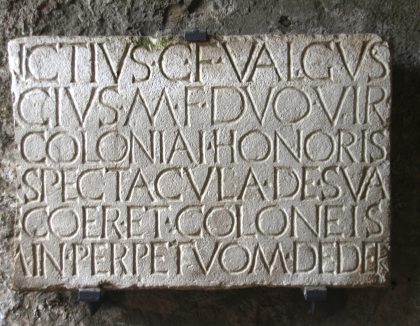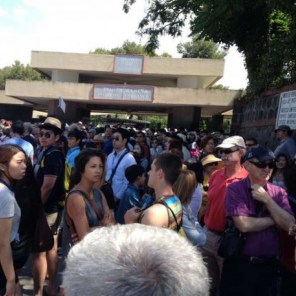The Grand Theatre

The Teatro Grande in Pompeii has been built in the Samnite era, but it was completely rebuilt in the II century BC, during the Augustian age, as testified by an ancient iscription, still conserved. As gathered from the name, the theatre was huge and it could accomodate up to 5000 people. Its main pecularity is the excellent acoustics.
As well as the main theatres, Teatro Grande was built nearby a sacred area; indie, the theatre is situated on the scope of a hill, near a Doric temple. For this reason, theatre’s architecture is hellenistic, and one of its doric characteristic is the horseshoe shape.
The cavea was the area reserved to the public, and it could accomodate about 5000 spectators. This area was divided in three sections: the ima cavea, covered with marble and reserved to decurions, the media cavea, the biggest and better placed to enjoy the show, reserved to the corporations, and the summa cavea, with limited seats. Both media and summa cavea are divided in five sections, but today a small strecht is all that remains of the summa cavea, as a result of the earthquake of the 1962. There should have been also bleachers on a corridor with barrel valuts; bleachers are also on the parods, but probably they were added later, because it is quite an unusual characteristic for this kind of buildings, which were always uncovered. Small stages, named tribunalia, which were reserved to guests of honor toh ave a perfect view on the show, completed the area for the public. It is possible to reach the orchestra’s area from two covered parods: the one on the right led to a countryard behind the scene, from where Triangular Forum was reachable: at its entrance a male head of Sillan age was found. The parod on the left, instead, is reachable from Via Stabia and leads to the same countryard: the two corridors’ epoch is uncertain. The stages’s area, in brickwork, is about one metre tall and it has two small staircases, from where actors reached the scene, while on the sides there were lairs for public order agents. The scene, protected by a curtain, was limited from an imitation of a two levels Prince Palace with three doors, decorated with several statues. On one side of the stage thee was a dressing room, that worked also a san access to the countryard. All the theatre’s area, probably, was decorated with fountains and nymphs, discovered during the excavation, whil some perforated blocks suggest that in summer months the structure was covered with a velarium.









